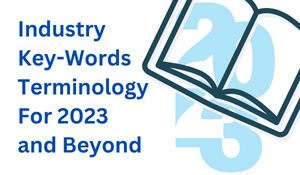Personal Data & Identity Market Assessment: Level Setting
Have you noticed? The world is awash in conversations about personal data and identity. Start talking about personal data and identity with someone, especially if they’re in the industry, and all kinds of buzzwords and triggers pop into the conversation. You’ll hear terms like these.
There are so many terms out there; it is difficult to know where to even start. I certainly can’t define all the terms right here, right now, but not to worry, I’ll be defining them in the final MEF Personal Data & Identity Market Assessment Report, which is due for release in Q4 2022. The overarching questions I am looking to answer in this report are:
-
What is the PD&I Market?
-
What do we need to know?
-
What do we need to do?
Peek into my initial views, which I’ve pulled from years of experience, over 25 industry leader interviews between August and September of 2021, and hours of secondary reading.
What is the PD&I Market?
The personal data and identity market is nothing short of massive. It touches every corner of every society worldwide. Put another way, personal data and identity is driving value for the world’s societies and economies. At a macro level, it is enriching in nearly every experience an individual has. It is also powering their digital and physical (i.e. phygital) personal, commercial, and professional relationships. For instance, on the commercial front, personal data and identity are used to enhance nearly every step an individual takes along their journey with retail, healthcare, finance, automotive, government, education, and other industry sectors.
What are we measuring?
Let’s first start by defining what we are trying to measure, that being the size and potential of the personal data and identity market. It is important to consider that personal data and identity “are two sides of the same coin.” They are a lens for looking at the same thing: an individual.
An individual is a human (in marketing terms a consumer, patient, voter, shopper, data subject, member, etc.), enterprise, country, or other legally recognized sovereign entity.
For this effort, we are using a broad aperture to define personal data. Most of the time, personal data is defined in the legal sense; that is, the terms personal data and identity and bounded. The bounding term in the legal sense that is often used is “personally identifiable information (PII),” not “personal data” in general or “identity” in general. As noted, for this effort, I am broadening my definition of both personal data and identity.
How big is it?
Given these definitions, from a pure econometrics perspective, it can be quite challenging to derive a definitive number for the size of the personal data & identity market. For example, one of the challenges is what to use to anchor our market sizing measurements. An instance of this is determining whether we measure the market by:
-
The revenue generated from the collection and sale of attribute data
-
The revenues generated from identity resolution
-
The losses to cybercrime or the cost saved from fraud prevention
-
The enrichment of people’s experience from self-actualization and life improvements due to their personal use of their own personal data and identity (e.g. qualified self)
-
The social good generated from capturing people’s digital exhaust (minus the externalities of course)
-
The wealth companies generate from personal data and identity in the form of top-line and bottom-line revenue, or that countries generate in the form of GDP increases
